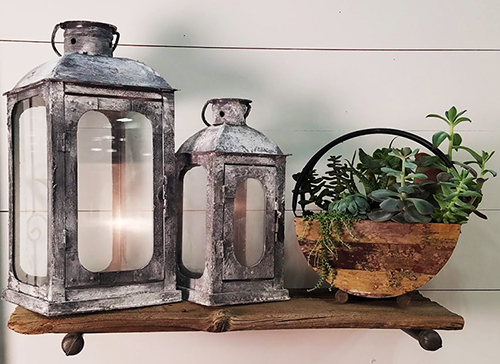 I used to be the person who killed every houseplant she ever had, until I learned the scientific information that debunked many of the myths I thought to be true.
I used to be the person who killed every houseplant she ever had, until I learned the scientific information that debunked many of the myths I thought to be true.
Myth 1: Put rocks or pieces of broken terra cotta pots in the bottom of the container before the substrate to improve drainage. This practice actually reduces drainage in containers because it causes an interface, a division between two substrates of different makeups that causes issues with drainage. In this case, the upper substrate must become completely saturated before water moves into the substrate below it. It is best to use the same substrate throughout the container to ensure you have appropriate drainage for your houseplant.
Myth 2: Indoor lights are sufficient for indoor plants. Plants need light from the orange-red and blue-violet parts of the visible wavelength spectrum to photosynthesize. Many of our traditional indoor incandescent and fluorescent bulbs only offer either orange-red or blue-violet respectively. You can purchase grow lights, which offer both the orange-red and blue-violet light spectra, or you can make sure your plants are near an untinted window that receives an adequate amount of natural light for the species.
Myth 3: The environment doesn’t matter for houseplants because they are indoors. Houseplants need species-specific environments just like our outdoor plants need. Before purchasing a plant, it’s important to know if it will tolerate the environment you can offer it. Some species can tolerate cooler temperatures, but most houseplants need temperatures between 60 and 75 degrees Fahrenheit.
Many species also need higher humidity, which can be an issue in our arid climate. A rubber tree plant (Ficus elastica) can tolerate the dryer air in homes, as opposed to a Norfolk Island pine (Araucaria heterophylla), which does best with humidity around 50 percent.
Lastly, most houseplants cannot tolerate direct drafts of air such as from an open window, heater, air conditioner or fan. Be sure to position your plant away from these drafts. If left near a draft, plants may drop leaves, dry out faster and can eventually die.
Myth 4: Watering your plants on a set day of the week is best. Each houseplant species will require a different watering schedule. and there are a variety of factors that come into play for watering requirements. You must first know the species you have and what type of watering and substrate it prefers. Some plants like lucky bamboo (Dracaena sanderiana) prefer to sit in water with just pebbles as a substrate, while others plants like ZZ Plant (Zamioculcas zamiifolia) prefer for the substrate to dry out completely and can survive months without water.
When you know what your plant needs, you can monitor watering by feeling the substrate. You may water your spider plant (Chlorophytum comosum) when the substrate is dry to the touch and your prayer plant (Maranta leuconeura) more often to ensure the substrate is always moist but never soggy.
Other plants need specific watering procedures. Air plants may require a good soaking of the entire plant once or twice a week for 30 to 45 minutes to ensure adequate water in our dry climate. African violet (Saintpaulia species) and purple passion plant (Gynura aurantiaca) don’t like their leaves to get wet and should be watered from the bottom of the container.
Once I learned what I was doing wrong, I became a houseplant fanatic. Just remember, know the species you have and what it needs so you can have healthy indoor plants year round.
Fisher, J.
2019,
Four Myths of House Plant Care,
Reno Gazette Journal


